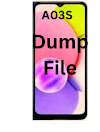What is Dump file
In the context of embedded systems or mobile devices, an EMMC dump file typically refers to a copy or backup of the contents stored on an eMMC (embedded MultiMediaCard) flash storage. This dump may include the device's firmware, operating system, and user data. It can be useful for creating backups, performing forensic analysis, or troubleshooting software issues.
why use dump file in emmc
A "dump file" in the context of eMMC (embedded MultiMediaCard) storage typically refers to a backup or copy of the contents stored on the eMMC chip. There are a few reasons why creating a dump file can be useful:
1. **Data Backup and Recovery:** Dumping the contents of an eMMC chip allows users or developers to create a backup of the data stored on it. In case of data loss or corruption, the dump file can be used to restore the system to a previous state.
2. **Firmware Development and Debugging:** In embedded systems, developers often create dump files during the development process. These files contain the firmware, configurations, and other data, enabling them to analyze and debug the system's behavior at a specific point in time.
3. **System Cloning:** Dump files can be used to clone or replicate the software environment on multiple devices with similar eMMC configurations. This is common in scenarios where identical software setups are needed across multiple units.
4. **Forensic Analysis:** In forensic investigations, creating a dump file of an eMMC can be valuable for analyzing the device's contents without modifying the original data. This is crucial in digital forensics when investigating incidents or crimes involving electronic devices.
5. **Software Updates and Rollbacks:** Dumping the eMMC content before a softwareu update allows for a rollback to the previous version if issues arise with the new software. It provides a safety net to revert to a known working state.
In summary, creating a dump file of an eMMC is a practical measure for backup, recovery, development, and various scenarios where preserving or restoring data and system states is essential.
what different Between dump file and flash file
1. Dump File:
• A dump file generally refers to a file that contains a copy or snapshot of the current state of a particular area of memory or storage.
• Dump files are often used for backup, recovery, or analysis purposes. For example, a memory dump might capture the state of a computer’s RAM at a specific point in time.
• In embedded systems, a dump file might refer to a copy of the firmware or data stored on a chip, often used for debugging or forensic analysis.
2. Flash File:
• A flash file typically refers to a file that contains firmware or software code that is intended to be written to or flashed onto a device’s flash memory.
• Flash memory is a type of non-volatile storage that retains data even when the power is turned off. Flash files are used to update or replace the software on a device.
• When you hear about flashing a ROM or firmware, it usually involves writing a flash file to the device’s flash memory to update or install new software.
In summary, the key difference lies in their usage and content. A dump file is often a copy or snapshot of data or memory, used for backup or analysis, while a flash file typically contains firmware or software code that is written to flash memory to update or replace the existing software on a device.






0 Comments